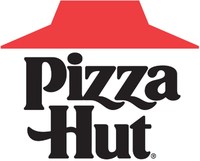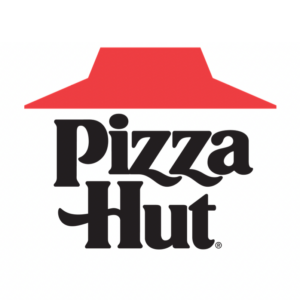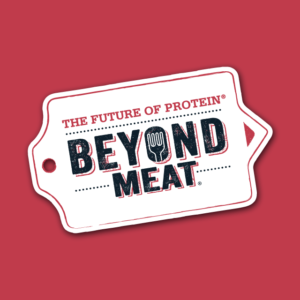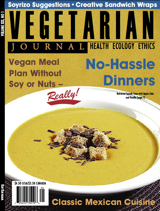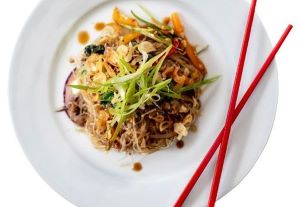Posted on
August 21, 2012 by
The VRG Blog Editor
By Jeanne Yacoubou, MS
VRG Research Director
Introduction
In 2007, The VRG learned from an employee at Danisco, a major enzyme manufacturer, that fermentation produced chymosin (FPC) responsible for curdling milk used in making cheese, originated from a calf gene. (Chymosin is the primary enzyme in rennet responsible for curdling.) He told us: “Ultimately, maybe twenty-five years ago, the gene used to make microbial chymosin is from calf rennet. It has been genetically modified so it is a GMO product [strictly speaking].” In 2007, The VRG was told by several cheese companies and enzyme makers that approximately 70% of all cheese in the United States was produced with FPC.
In this update, The VRG more closely examines FPC, which is often referred to on labels as “microbial rennet.” In the process, we will discuss the role of bioengineering, such as recombinant DNA technology, in enzyme production commercially practiced today. Labeling issues arise and a comparison with the European Union will be discussed.
History
As we wrote in a 2008 article on rennet, there are four major types of rennet: calf rennet, microbial rennet, FPC, and vegetable rennet. In 2012, best estimates from enzyme companies and dairy groups attribute 90% of all commercial cheese production in the United States to FPC.
Before we get too far ahead, it’s helpful to keep in mind the role of chymosin/rennet in cheese manufacture. Enzymes used to coagulate milk in cheese production (disregarding other enzymes known as lipases which may be added to some cheeses for flavor and which are usually derived from animals even today although this is changing), whether a single type (chymosin) or a mixture, are used in very small quantities (e.g., approximately one ounce per one hundred gallons of milk), and later largely removed from the final cheese product. Approximately 90-95% of the small quantity remains in the whey produced during cheese manufacture. This whey, considered a byproduct of cheese production, is often added to many other food products today, especially packaged foods.
When calf rennet became scarce and unreliably available in the 1960s and 70s as the veal industry was declining due to the animal rights movement but demand for cheese increased, calf rennet became very expensive. Companies looked for a “rennet substitute.” Recombinant DNA technologies involving microbes were becoming popular and companies turned to it in the 1980s.
Companies were encouraged to do so when the U.S. Supreme Court by a 5-4 vote in 1980 ruled that new life forms can be patented.
http://scholar.google.com/scholar_case?case=3095713882675765791&q=Diamond+v.+Chakrabarty%29&hl=en&as_sdt=2,21&as_vis=1
This landmark case overturned a Patents and Trademark Office denial of the patent for a genetically engineered microbe.
In 1990, in another precedent-setting decision by a U.S. government office, the Food and Drug Administration (FDA) approved the use of FPC in food. It was the first time a bioengineered product was permitted in food in the U.S. Insulin, manufactured in a similar fashion, was approved by FDA eight years earlier as a drug. Read about it here: http://www.fda.gov/AboutFDA/WhatWeDo/History/ProductRegulation/SelectionsFromFDLIUpdateSeriesonFDAHistory/ucm081964.htm.
Pfizer is credited with perfecting the technique in which genetic material (ribonucleic acid, or RNA) coding for chymosin is removed from an animal source and inserted via plasmids into microbial DNA (bacteria E. coli K-12) in a process known as gene splicing (a type of recombinant DNA technology). Through fermentation the microbes possessing the bovine genetic material produce bovine chymosin which is later isolated and purified in quantities much greater than those in calf rennet or in non-animal recombinant DNA microbial rennets. Since the original Federal Register article announcing bioengineered chymosin’s approval is no longer available online because it is so dated, (but may be purchased by calling or ordering offline), those interested may read about the FDA approval here:
http://www.nytimes.com/1990/03/25/us/gene-altered-item-approved-by-fda.html
http://articles.latimes.com/1990-03-24/news/mn-681_1_genetically-engineered-product-for-food
What is significant about the FDA approval is that bioengineered chymosin was granted Generally Regarded as Safe (GRAS) status. This meant that Pfizer was exempt from the preapproval requirements that apply to new food additives. Pfizer demonstrated what is often referred to as “substantial equivalence.” FDA concluded that bioengineered chymosin was substantially equivalent to calf rennet and needed neither special labeling nor indication of its source or method of production.
As J. H. Maryanski, Strategic Manager for Biotechnology, Center for Food Safety and Applied Nutrition, FDA, explained in an article titled “FDA’s Policy for Foods Developed by Biotechnology,” Pfizer showed “…the introduced chymosin gene encoded a protein that had the same structure and function as animal-derived chymosin; the manufacturing process removes most impurities; the production microorganisms are destroyed or removed during processing and are non-toxigenic and non-pathogenic; and any antibiotic-resistance marker genes (e.g., ampicillin) are destroyed in the manufacturing process.” In effect, the FDA extended calf rennet’s GRAS status to the bioengineered chymosin product. A few years later, FDA extended GRAS status to two other forms of bioengineered chymosin: that produced from Kluyveromyces marxianus var. lactis and Aspergillus niger var. awamori. In none of these approvals was FDA concerned with the process used to generate the chymosin.
View Pfizer’s patent application here: http://www.freepatentsonline.com/4935370.html Scrolling midway down the page, under the paragraph headed “Preparation of RNA and Cloning of cDNA,” readers may note the first line which reads in part: “Total RNA from animal pituitaries was obtained from a local slaughterhouse…”
The writer points out this sentence because in an email exchange in 2012, an industry group described this first production of chymosin from E. coli as “synthetic.” The Pfizer application description for bioengineered chymosin begins with a natural (i.e., animal organ) source.
This interpretation and use of “synthetic” in how the recombinant process began in chymosin production also occurs in other places. For example, a 1993 International Dairy Journal article titled “Enzymes in Cheese Technology,” by P.F. Fox and L. Stepaniak article states:
“There would appear to be no reason why the rennet substitute saga should not be closed – an unlimited supply of high-quality rennet is now available. However, there is opposition from certain quarters to the use of chymosins from genetically engineered microorganisms. Microbial chymosin should be acceptable for the manufacture of ‘vegetarian’ cheese. However, the gene cloned in K. Lactis was isolated from calf gastric tissue and is, apparently, not acceptable to some vegetarians. As the gene cloned in E. coli was synthesized, this chymosin should be acceptable to vegetarians.”
Today, Chr. Hansen, the makers of bioengineered FPC Chy-Max®, uses the fungus Aspergillus niger. An employee of the company told The VRG in 2012 that “a calf gene was used” initially.
According to product data sheets, DSM makes its bioengineered FPC, Maxiren®, using the yeast Kluyveromyces lactis. DSM did not reply to our inquiries about use of a calf gene. According to the International Dairy Journal article cited above, it appears that a calf gene was also used initially to produce Maxiren®.
FPC, often labeled as “microbial rennet” or “vegetable rennet,” and described in product literature as “vegetarian,” is believed by those in the cheese industry to yield high-quality and good-tasting cheese indistinguishable from that produced through the use of calf rennet.
FPC does not, according to many in the cheese industry, yield sometimes bitter-tasting cheese which non-animal “microbial rennet” may yield especially if the cheese is aged for too long of a time. For these microbial rennets, in which a fermentation process is involved like the case of FPC production, the chymosin-like enzymes called acid proteinases are native to the microbes (fungi Rhizomucor miehei, R. pusillus and Endothia parasitica). According to an article published in 1996 in the journal Antonie van Leeuwenhoek titled “Acceleration of Cheese Ripening” by P.F. Fox et. al.: “The gene for the acid proteinase of R. miehei has also been cloned and expressed in A. oryzae, and the product is commercially available (Marzyme®…).” (A. oryzae is a fungus.)
Marzyme® manufactured by Danisco-DuPont is a non-animal microbial rennet that is commercially available today. A senior level employee at Danisco/DuPont told The VRG that “In consultation with our business unit leader, I can report the following: Animal genes were not ever used in the production of Marzyme®. It is a protease of microbial origin. No bovine genes or enzymes were used to develop Marzyme® or to produce Marzyme®.” (Specific details on the process, specifically if any non-animal genetic recombination of any type was done, are not available. A product data sheet on Marzyme™ Supreme specifies R. Miehei only.) A cheese supply company told The VRG that Marzyme® is less expensive that FPC. For example, in 2011, a five-gallon container of Marzyme® sells for approximately $312 while the same quantity of a FPC costs approximately one hundred dollars more.
Other microbial rennets which do not appear to have been produced through recombinant animal gene technology include Hannilase® by Chr. Hansen. R. miehei is used to produce Hannilase®. DSM produces Fromase® from R. miehei which is listed both as non-GMO and vegetarian. DSM also produces Suparen/Surecurd® derived from the fungus Cryphonectria parasitica and described as vegetarian in product literature.
More on FPC Terminology
The writer observed while working on this update that companies manufacturing bioengineered FPC produced originally through animal gene splicing use the phrase “microbial rennet” to describe their product. They refer to them as “acceptable to vegetarians.” They also use “non-GMO” or “GMO-free” to describe their products.
Likewise, companies producing microbial rennet that had not involved animal gene splicing use the same terms to describe their products. Some vegetarians may wish to know more information about the source of the “microbial” or “non-GMO” rennet in the cheese they wish to consume.
As of June 2012, FDA has not established a legal definition for what is “GMO” or “non-GMO.” Nor are there any mandatory rules for labeling products manufactured by genetic techniques or containing genetically modified organisms (GMOs) or their products. In the United States, there are voluntary guideline documents intended to assist companies with manufacturing and labeling issues involving GMOs. See the most recent one here:
http://www.fda.gov/food/guidancecomplianceregulatoryinformation/guidancedocuments/foodlabelingnutrition/ucm059098.htm
In this document, FDA acknowledges concerns that people may have about bioengineered foods. However, except for a few cases listed in the document, (and bioengineered products such as FPC considered GRAS are notably not included), FDA does not see the need at this time to require labeling because, in most cases, the agency sees no threat to human health or public safety. Here is an excerpt:
“Most of the comments [to us] that addressed labeling requested mandatory disclosure of the fact that the food or its ingredients was bioengineered or was produced from bioengineered food. However, these comments did not provide data or other information regarding consequences to consumers from eating the foods or any other basis for FDA to find under section 201(n) of the act that such a disclosure was a material fact. Many of the comments expressed concern about possible long term consequences from consuming bioengineered foods, but they did not contend that any of the bioengineered foods already on the market have adverse health effects…The agency is still not aware of any data or other information that would form a basis for concluding that the fact that a food or its ingredients was produced using bioengineering is a material fact that must be disclosed under sections 403(a) and 201(n) of the act. FDA is therefore reaffirming its decision to not require special labeling of all bioengineered foods.”
By contrast, explicit definition and regulation about GMOs and products derived from them (such as FPC) have existed in the European Union (EU) since the 1990s. The regulations are very detailed and very extensive. GMOs that fall under the EU regulations include:
- GMOs by themselves;
- food and feed containing GMOs;
- food and feed produced from or containing ingredients produced from GMOs.
The most recent EU document can be viewed here: http://eur-lex.europa.eu/LexUriServ/LexUriServ.do?uri=OJ:L:2003:268:0001:0023:EN:PDF
In our review of FPC produced by European companies who adhere to these guidelines and refer to their FPC products as “non-GMO,” it appears that FPC is exempt from labeling requirements. The process by which FPC is produced is included in the EU’s regulations as a GMO technique, so it may initially appear to some that FPC is a GMO product and subject to labeling.
(A partial list of those techniques in Annex IA is reprinted here and accessed http://eur-lex.europa.eu/LexUriServ/LexUriServ.do?uri=CONSLEG:2001L0018:20080321:EN:PDF:
“Recombinant nucleic acid techniques involving the formation of new combinations
of genetic material by the insertion of nucleic acid molecules produced by whatever means outside an organism, into any virus, bacterial plasmid or other vector system and their incorporation into a host organism in which they do not naturally occur but in which they are capable of continued propagation…”)
FPC, it appears, is not considered “GMO” and subject to labeling requirements because it appears in foods as “a trace” below the 0.9% threshold which requires labeling and may be “technically unavoidable” to remove as demonstrated by the manufacturers requesting exemption. Companies manufacturing FPC label it “non-GMO.” Article 4 Part C on exemptions to labeling appears in this document: http://eur-lex.europa.eu/LexUriServ/LexUriServ.do?uri=OJ:L:2003:268:0024:0028:EN:PDF
However, a European group known as GMO Compass refers to chymosin produced through gene technology as “GM” (genetically modified) and contrasts it with “microbial rennet substitutes which are derived from non-GM microorganisms.” http://www.gmo-compass.org/eng/database/enzymes/83.chymosin.html. GMO Compass states that chymosin produced through genetic technology is used to make European cheese (except in France and Austria). Presently, it does not have to be labeled at all.
The VRG wrote to the Association of Manufacturers and Formulators of Enzyme Products (AMFEP) based in Belgium in April 2012 about chymosin. Here is their response to our question: Is there a microbial rennet which has not been originally developed from a calf gene?
“‘Microbial rennet’ is the term commonly used for all milk coagulating enzymes from microorganisms, especially enzymes which are native to certain microorganisms, not a result of genetic modification. Protease from Rhizomucor miehei or Cryphonectria parasitica are examples and they are suitable, for example, for vegetarian cheese.
Chymosin, the classical animal-derived milk coagulant found in rennet, is also produced by means of microorganisms, e.g., genetically modified strains of Aspergillus niger. The chymosin gene inserted in the organism is in fact synthesized, not extracted from the animal…”
Wondering if AMFEP knew of a “synthetic” chymosin derived from non-living substances with no animal gene splicing ever involved, The VRG asked this group for further clarification in April 2012. As of this writing in June 2012, no response from AMFEP has been received. Given the organism cited by AMFEP to produce a “synthetic” chymosin, the writer wonders if the bioengineered Chy-Max® manufactured from A. niger is here described as “synthetic” by AMFEP. (The VRG was told by a Chr. Hansen employee that their FPC Chy-Max® was based on a calf gene initially.)
In recent telephone conversations and email exchanges with several enzyme companies, cheese companies, dairy groups, nonprofits, and FDA, the writer observed that there is no standard use of the terms “GMO product” or “non-GMO product.” An FDA employee wrote to us in July 2011: “It is not true that enzyme-modified cheeses…contain GMOs… Microbial rennet is chemically identical to that derived from calf stomach. The organisms modified to produce microbial rennet would be considered GMOs, but that’s where the GMO issue begins and ends.” The FDA employee declined to give further clarification on her statement when we asked.
Similarly, an employee of a major enzyme manufacturer, after he said that calf genetic material was removed and added to microbial genetic material, told The VRG in March of 2012 that “the resulting enzyme is non-GMO.”
The assertion that chymosin is non-GMO is not accurate according to some as we’ve seen (GMO Compass). The Non-GMO Project based in the United States, a nonprofit that certifies food products as non-GMO, maintains this position as well. The group told The VRG that chymosin is a “high-risk ingredient.” Listed in their Standards in Appendix A, Variance 4a, chymosin is “…one of the things we specifically wanted to make sure was NOT allowed through” [in a product that we declare to be non-GMO.] (emphasis added by the Non-GMO Project)
http://www.nongmoproject.org/product-verification/non-gmo-project-standard/
The Non-GMO Project told us that “If a cheese has our seal on it, the consumer can be assured that it does not have [bioengineered] chymosin.” The Introduction to their standards contains this group’s definitions of “GM” (1.3.3), “GMO” (1.3.4), and “non-GMO” (1.3.7) and are reprinted here:
GM: Genetically Modified or Genetic Modification—A term referring to products or processes employing gene splicing, gene modification, recombinant DNA technology, or transgenic technology, and referring to products of the gene-splicing process, either as inputs or as process elements.
GMO: A plant, animal, microorganism, or other organism whose genetic makeup has been modified using recombinant DNA methods, also called gene splicing, gene modification, or transgenic technology…
Non-GMO: A plant, animal, or other organism or derivative of such an organism whose genetic structure has not been altered by gene splicing. A process or product that does not employ GM processes or inputs…”
Current FPC Use and Labeling in the United States
The VRG looked again in May 2012 at FPC used in the United States and learned from cheese companies, enzyme makers, and dairy groups who agreed that today approximately “90%” of all cheese made in the United States is made with FPC. Product data sheets or product literature on two major FPC products, Chy-Max® (manufactured by Chr. Hansen) and Maxiren® (manufactured by DSM), state that FPC is “vegetarian” and “non-GMO.”
Chy-Max®
These are several different types of Chy-Max®: Chy-Max® Plus, Extra, Ultra, and Special. The first three in the list are 100% chymosin. Chy-Max® Special is 80% chymosin and 20% bovine pepsin (another type of enzyme). According to the product data sheet on Chy-Max® Extra, it is “acceptable for the production of vegetarian cheeses.”
The newest addition to the Chy-Max® line of product is Chy-Max M®, developed using a camel gene. It is considered a second generation FPC, described by the company as coagulating milk five times faster than first generation FPCs and 25 times faster than microbial rennets developed from R. Miehei. The company calls this FPC “suitable for vegetarians.” As reported in FoodNavigator, Chy-Max M® increases cheese yield per quantity of milk and produces a better-tasting cheese with a prolonged shelf-life. http://www.foodnavigator.com/Financial-Industry/Chr-Hansen-to-launch-next-generation-cheese-coagulant
An announcement in the Journal of Dairy Science, Vol. 92 stated that “…chymosin from Camelus dromedarius (CC) has been obtained through heterologous expression in Aspergillus niger and is now commercially available as Chy-Max M® from Chr. Hansen.” It has GRAS status in the US. Information on the precise method by which the camel gene was obtained is not available although a patent application states that “extracts of camel abomasum (camel rennet comprising chymosin and pepsin) have been used to coagulate cow’s milk.” (“Abomasum” refers to the fourth stomach of a ruminant.) http://www.patentstorm.us/applications/20110008492/description.html
Chr. Hansen sent us a non-GMO statement for its Chy-Max®. The company uses European Union regulations (see above) regarding genetic modification. According to Chr. Hansen, “Legislation in the European Union states that a final food product must be labeled if it is a GMO itself, if it contains GMOs, or if it contains ingredients derived from GMOs.”
The company concludes that “Chy-Max® Extra does not contain GMOs and does not contain GM labeled raw materials…The use of Chy-Max® Extra does not trigger a GM labeling of the final food product.” Chr. Hansen’s position on GMO can be found on:
www.chr-hansen.com/About us/Policies and positions/Quality and product safety.
Chy-Max cannot be used in USDA Organic Cheese. According to a company statement, Chr. Hansen states:
“The Organic Foods Production Act (OFPA) of 1990 required the USDA to develop the National Organic Program (NOP). The NOP sets national standards for organically produced products. The NOP assures consumers that agricultural products labeled as organic meet consistent standards. The NOP regulation 7CFR205.105 lists allowed
and prohibited methods, substances and ingredients for use in organic production and handling.
As such, the Chr-Hansen, Inc. product, Chy-Max®, does not meet these requirements and cannot be used as an ingredient in or on processed products to be labeled as ‘100% Organic,’ ‘Organic,’ or ‘Made with Organic (specified ingredients).’”
Maxiren®
DSM produces a FPC called Maxiren®. DSM has not responded to our inquiries as of this writing. A German company which carries DSM products told The VRG in writing that “DSM confirms that Maxiren®®is a non-GMO product.” Maxiren® 600 KPO is made from Kluyveromyces lactis. Maxiren® Premium is made from “Kluyveromyces lactis mixed with a carboxypeptidase derived from a selected strain of Aspergillus niger. DSM product brochures describe Maxiren® as “vegetarian friendly.”
What Does FPC Mean for Cheese-Eating Vegetarians?
To the best of our knowledge and according to our observations, ingredient labels do not distinguish between FPC “microbial rennet” and the “microbial rennet” composed of an enzyme/enzyme mix produced without any gene technology or with non-animal recombinant gene technology. Likewise, “vegetable rennet” and “vegetarian rennet” may also mean that either FPC or a “naturally” derived microbial enzyme/mix was used. Any type of “microbial rennet” could be called “natural,” too. (Recall that FDA has not, as of June 2012, legally defined use of the term “natural.”)
When we asked cheese companies and restaurants about their “microbial rennet” we were told in all cases that the source of the “microbial rennet” was non-animal. Given that 90% of all US cheese is made with FPC according to several industry sources, the writer must conclude that most companies and restaurants are not aware of the animal gene splicing involved in FPC manufacture and/or consider FPC “vegetarian acceptable” as FPC product data sheets from the manufacturers state it is. Some vegetarians may agree that FPC is vegetarian while others may not.
We’ve also learned from doing this update that it must not be assumed that “non-GMO” chymosin implies “vegetarian.” Vegetarians should note that, according to several industry sources, 90% of all US cheese is made with FPC, a product of animal gene splicing, and it as well as the cheese produced by it are considered “non-GMO” by the companies that manufacture it. Some vegetarians may agree that “non-GMO” FPC is vegetarian while others may not.
According to the writer’s knowledge, FPC is not permitted in USDA Organic Cheese. There was a petition to allow the “bio-engineered form” of chymosin to be added to the National List of Allowed and Prohibited Substances (in products certified under the USDA Organic Program by the National Organic Standards Board (NOSB)). The petition was denied because FPC was considered “bio-engineered” and thus unsuitable for inclusion in the USDA Organic Program which disallows the presence of such substances in USDA Organic products. As a panel member for the petition review said, “The NOSB has recommended that all organisms that have been genetically modified by [recombinant DNA] techniques be considered synthetic.” FPC was determined to be “synthetic.”
Furthermore, the panel members pointed out, “non-synthetic” cheese making enzymes (i.e., calf rennet, non-engineered microbial rennets) are available. (Rennet is an example of a non-agricultural substance that is allowed in organic food products when it is derived from calves or non-genetically altered microorganisms.) Technical Advisory Panel Reports concerning the petition to include FPC as an allowed substance in USDA Organic-certified foods can be accessed here: http://www.ams.usda.gov/AMSv1.0/getfile?dDocName=STELPRDC5066977&acct=nopgeninfo
Another USDA document pointed out that GMOs are not permitted at all in USDA Organic foods and beverages. The USDA Deputy Director gives some indication of what the USDA means by “GMO” in describing the “excluded methods” in USDA Organic production:
“A variety of methods used to genetically modify organisms or influence their growth and development by means that are not possible under natural conditions or processes and are not considered compatible with organic production. Such methods include…recombinant DNA technology (including gene deletion, gene doubling, introducing a foreign gene, and changing the positions of genes when achieved by recombinant DNA technology).”
http://www.ams.usda.gov/AMSv1.0/getfile?dDocName=STELPRDC5096493
The contents of this article, our website, and our other publications, including The Vegetarian Journal, are not intended to provide personal medical advice. Medical advice should be obtained from a qualified health professional. We often depend on product and ingredient information from company employees or company statements. Information does change and mistakes are always possible. Please use your own best judgment about whether a product is suitable for you. Further research or confirmation may be warranted.
Readers may be interested in a blog post on cheeses used by Pizza Hut:
http://www.vrg.org/journal/vj2011issue1/2011_issue1_chymax.php
For more information on food processing methods and food ingredients and to purchase our Guide to Food Ingredients, please visit our website at http://www.vrg.org/ingredients/index.php
For updates on ingredients and other information of interest to vegetarians and vegans, please subscribe to our e-newsletter at http://www.vrg.org/vrgnews/
There are many ways to stay connected to The Vegetarian Resource Group! Get our blog delivered right to your inbox: http://feeds.feedburner.com/TheVRGBlog
Visit us on Twitter: http://twitter.com/VegResourceGrp
And like us on Facebook: http://www.facebook.com/thevegetarianresourcegroup
To support Vegetarian Resource Group research, please donate at http://www.vrg.org/donate
